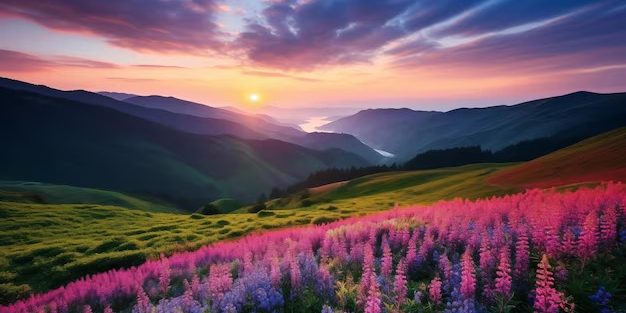
Valley of Flowers, nestled in the Himalayas of Uttarakhand, is not just a destination—it’s nature’s vibrant canvas. This high-altitude valley, known for its rare blooms and scenic trails, draws trekkers, photographers, and peace seekers from across the world. A UNESCO World Heritage site, it offers unmatched beauty during the monsoon months when thousands of flowers come alive.
Whether you’re drawn by adventure or serenity, this ultimate travel guide covers everything you need—how to reach, best time to visit, trekking tips, and more—to make your Valley of Flowers journey unforgettable.
Best Time to Visit Valley of Flowers
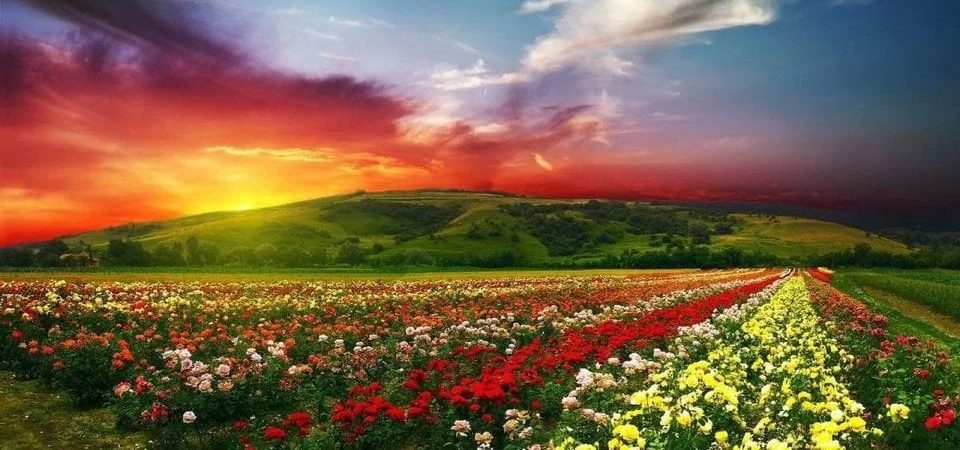
The best time to visit Valley of Flowers is mid-July to August, during the peak monsoon season. At this time, the national park transforms into a vibrant bloom of rare alpine flowers, lush green trails, and misty mountain views.
By late June, the trek route opens. July brings full greenery and early blooms. August is the highlight—thousands of flowers cover the valley in vivid color.
September still offers beauty, with fewer crowds and fading flowers, making it ideal for quiet nature walks. After early October, the region closes as snow starts to fall and the area becomes inaccessible.
To truly witness the valley’s magic, plan your trip between mid-July and late August, when nature is at its most colorful and alive.
Ideal Time for Trekkers
- June (Last Week) – The Valley of Flowers trek begins in the last week of June. Melting snow reveals early greenery. Trails may stay wet, but the first signs of blooming meadows make it an unforgettable start.
- July (Full Month) – July is the peak blooming time. The monsoon arrives, bringing life to the valley. Flowers like blue poppies, geraniums, and daisies cover the ground. Rain may come and go, but the scenic beauty stays constant.
- August (Mid to End) – The valley looks the most vibrant now. Rare flowers like brahmakamal and cobra lilies bloom at their best. Trekking feels more adventurous as showers add to the mood. Photographers and nature lovers find this month irresistible.
- September (First Half) – Blooms begin to fade, but skies clear up. Trekking becomes smoother, and crowds reduce. The meadows turn golden-green, creating a serene and soul-stirring landscape. Perfect for those seeking quiet exploration.
How to Reach Valley of Flowers
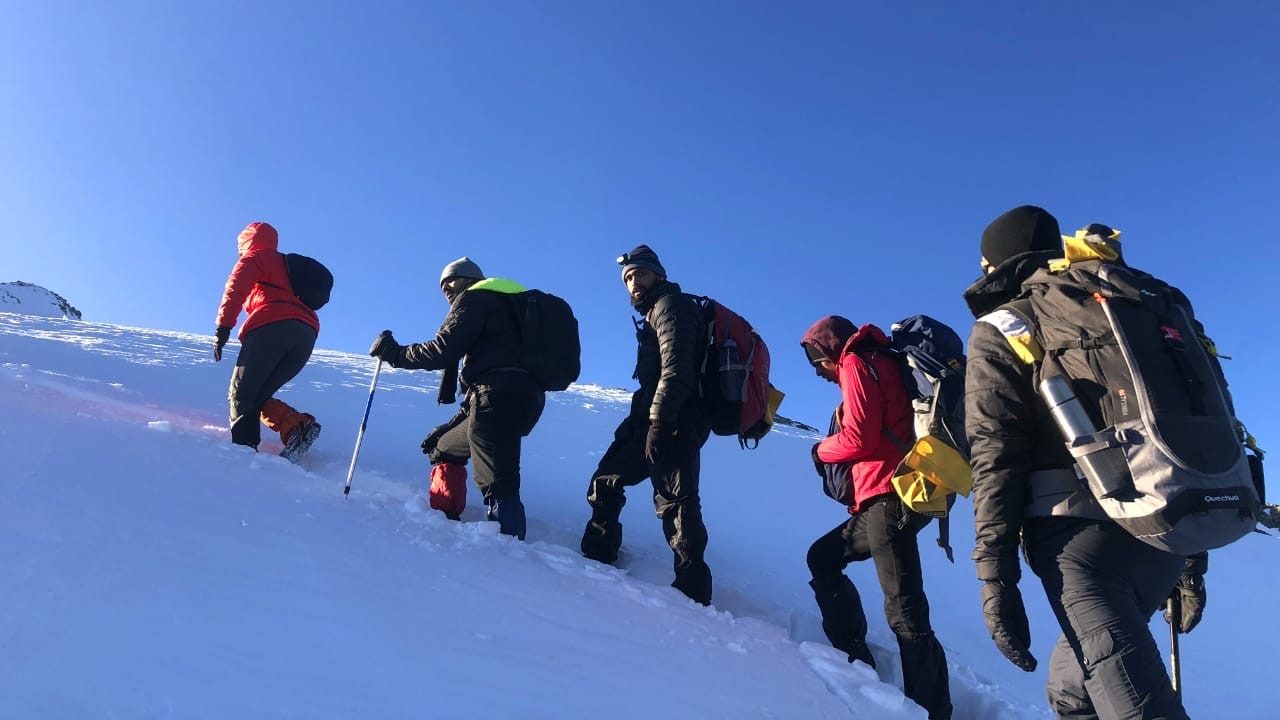
To begin your Valley of Flowers trek, reach Govindghat, the main entry point in Uttarakhand. From there, continue to Pulna, the actual road head for the trek. Here’s a step-by-step breakdown:
🛫 By Air
Book a flight to Jolly Grant Airport (Dehradun). This is the nearest airport, around 290 km from Govindghat. From the airport, you can take a cab or shared taxi to reach Joshimath, and then drive to Govindghat.
🚉 By Train
The closest railway station is Rishikesh, about 270 km from Govindghat. It connects to major Indian cities like Delhi, Haridwar, and Dehradun. From Rishikesh, buses and cabs regularly run to Joshimath and Govindghat.
🚌 By Road
Govindghat is well-connected by road to Delhi (500 km), Haridwar, Rishikesh, and Dehradun. You can take a bus or drive through NH7. The road is scenic but curvy—start early to avoid fog or rain delays.
🚕 Govindghat to Pulna (Last Motorable Point)
From Govindghat, take a shared taxi or local jeep to Pulna, which is just 4 km ahead. Pulna is now the actual road head for the Valley of Flowers trek.
🥾 Trek Route Breakdown
- Pulna to Ghangaria: The 13 km trek starts from Pulna. You can walk or hire mules / porters. The trail follows the Pushpawati River, crossing scenic bridges and waterfalls.
- ⛺ Ghangaria Base Camp: Spend a night here. Ghangaria is the official base camp for both the Valley of Flowers and Hemkund Sahib treks.
- 🗾Ghangaria to Valley of Flowers: Trek 4 km to reach the main gate of the Valley of Flowers National Park. Entry fee applies.
✅ Bonus Tip: If you’re starting from Delhi, plan your route as Delhi → Rishikesh → Joshimath → Govindghat → Pulna → Ghangaria → Valley of Flowers for a smoother trip.
Why Valley of Flowers is a UNESCO World Heritage Site
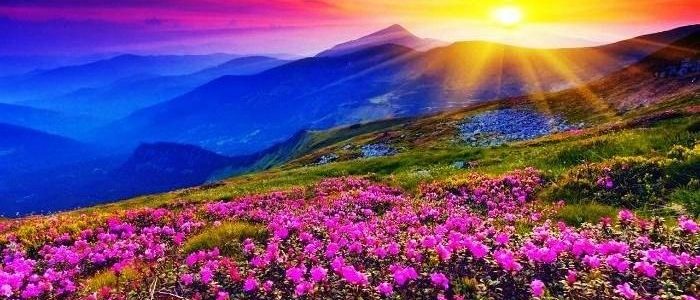
The Valley of Flowers, located in Uttarakhand, was declared a UNESCO World Heritage Site in 2005 — and for good reason. This alpine valley is globally recognized for its rare biodiversity, stunning landscapes, and unique ecological value.
🌿 1. Exceptional Natural Beauty
The valley transforms into a vibrant floral carpet between July and September, bursting with over 500 species of wildflowers. Orchids, poppies, marigolds, and Himalayan blue poppies bloom in full glory, making it one of the most breathtaking sights in India.
🐾 2. Rare Flora and Fauna
Home to many endangered and endemic species, including the elusive snow leopard, blue sheep, Asiatic black bear, and rare butterflies, the valley is a natural habitat hotspot. It’s also famous for medicinal plants used in Ayurveda.
🧪 3. Ecological Importance
The Valley of Flowers National Park forms a transition zone between the Zanskar and Great Himalayan ranges. Its location, altitude, and climate create a unique biosphere, studied by ecologists and botanists worldwide.
🏞️ 4. Cultural and Spiritual Significance
Apart from natural beauty, the valley holds a spiritual connection. Locals believe it to be the place where Hanuman found Sanjeevani Booti during the Ramayana era. This adds deep mythological and cultural value.
🛡️ 5. Well-Protected Conservation Area
Due to its strict conservation policies and limited tourist access, the valley has remained pristine. The trek is regulated, and only day trips are allowed, helping preserve its delicate ecosystem.
📝 In Summary: The Valley of Flowers is a UNESCO World Heritage Site not just for its stunning beauty, but also for its scientific, ecological, and cultural significance. It truly is a living natural museum tucked in the Himalayas.
Cultural and Historical Significance of Valley of Flowers
The Valley of Flowers is not just stunning — it’s sacred, storied, and spiritually alive. From ancient texts to modern trekking tales, this Himalayan jewel carries meaning far beyond its beauty.
🔱 1. First, Tied to Ramayana’s Sacred Tale
To begin with, legends say Hanuman flew to this valley in search of the Sanjeevani Booti. This rare herb, said to cure any illness, was taken to save Lakshman. As a result, the region became more than just myth — it became sacred ground.
🧘 2. Next, A Silent Haven for Yogis
Over the years, many yogis have come here. Why? Because this valley offers complete silence. Here, you don’t just walk — you meditate. Even today, saints still trek to this land for inner peace. For them, it’s a natural temple.
🌄 3. Also, Linked to Pilgrimage Routes
Moreover, Hemkund Sahib, just a few kilometers away, strengthens the valley’s spiritual value. During the season, thousands of Sikh pilgrims pass through nearby Govindghat. As a result, Valley of Flowers becomes part of a larger sacred journey.
🧭 4. Then, Rediscovered by British Explorers
Though locals knew it for centuries, the world learned of it only in 1931. Back then, British botanist Frank Smythe explored the area and documented its wonders. Soon after, scientists and travelers followed. That’s how this hidden gem became a UNESCO World Heritage Site.
✅ In Summary:
All in all, the Valley of Flowers is not just nature’s canvas — it’s a treasure chest of myths, meditation, and meaning. Whether you’re here for flowers or faith, each step feels timeless.
Trekking Essentials for the Valley of Flowers
Planning the Valley of Flowers trek? Pack light, but pack smart. This high-altitude journey demands preparation. So, here’s exactly what you need to carry—nothing more, nothing less.
👟 1. First, Focus on Footwear
You’ll walk 13–17 km each day. Therefore, well-cushioned trekking shoes with strong grip are a must. Also, break them in before the trip to avoid blisters.
🧥 2. Then, Layer for All Weather
At one moment, it’s sunny. Next, clouds roll in. Hence, carry layers:
- Light thermals
- Waterproof windcheater
- Fleece or down jacket
Also, don’t forget a rain poncho or quick-dry jacket.
🎒 3. After That, Choose the Right Backpack
A 30–40L trekking backpack with chest and waist straps works best. Moreover, keep weight under 8 kg. Always use rain cover protection for your bag.
💧 4. In Addition, Hydration is Key
Due to the altitude, dehydration is common. So, carry at least 2 reusable water bottles or a hydration pack. Also, consider ORS sachets or electrolyte tablets.
🧳 5. Next, Don’t Skip These Trekking Must-Haves
- Trekking pole (optional but helpful)
- Quick-dry towel
- Sunscreen (SPF 50+) and lip balm
- Power bank
- Sunglasses with UV protection
- Flashlight or headlamp
- Personal medications
🧻 6. Meanwhile, Stay Hygienic and Eco-Friendly
Bring biodegradable toiletries, wet wipes, and a reusable garbage pouch. Leave no trace. The valley’s fragile ecosystem depends on it.
🛌 7. Then, Stay Warm at Night
Though days are pleasant, Ghangaria nights are cold. Therefore, pack:
- Woolen cap
- Gloves
- Woolen socks
- Sleepwear suited for 8–10°C
🧘♀️ 8. Finally, Carry What Feeds Your Soul
Books, a journal, a camera, or simply silence—choose what recharges you. After all, the Valley of Flowers trek isn’t just physical. It’s spiritual too.
✅ Bonus Tip:
Always keep one ID card and a few passport-size photos handy. Forest permits and hotel check-ins require them.
Things to Do in Valley of Flowers
The Valley of Flowers, a UNESCO World Heritage Site nestled in Uttarakhand, isn’t just a scenic destination—it’s an experience that unfolds with every step. Here are the top things to do strictly within the Valley of Flowers National Park:
🌸 1. Trek Through the Blooming Valley
Start your day early and step into the park by 7 a.m. From the very first step, the 4 km trail begins With every bend, vibrant surprises await—first the delicate blue poppies, then the striking cobra lilies, and finally the sacred brahma kamals blooming at higher altitudes. Step by step, the scenery transforms, turning each section into a fresh visual treat.
🦋 2. Discover Rare Himalayan Wildlife
Inside the protected park zone, you might spot the Himalayan black bear, blue sheep (bharal), or elusive birds like the Himalayan monal. Wildlife sightings are subtle, but keeping a patient eye rewards the observant trekker.
🗺️ 3. Explore the Valley’s Different Zones
The valley unfolds in sections—first comes the Pushpawati River zone, followed by the Tipra Glacier viewpoint, and eventually the central meadows. As you trek onward, each area reveals a new ecological setting. From one turn to the next, the landscape shifts—from riverbanks to rocky trails to blooming fields. To truly experience it all, plan your trek with enough time. That way, you won’t miss the lesser-walked routes that often hold the valley’s quietest, most rewarding views.
📸 4. Indulge in Nature Photography
The valley is a paradise for macro, landscape, and floral photography. The best light is between 7:30 am and 10:30 am, when the mist lifts and the sun highlights the valley floor. DSLRs and mobile photography alike capture stunning visuals here.
🧭 5. Sit Still and Absorb the Silence
After a few kilometers inside, find a rock near the Pushpawati riverbed or a quiet meadow. Sit still. Breathe. This is your moment of pure Himalayan stillness, far away from any network, noise, or rush.
💡 Nearby Experiences Around Valley of Flowers
While the Valley of Flowers itself offers unmatched natural beauty, several nearby experiences add depth and meaning to your overall journey. These are not inside the national park boundary but are often part of the same itinerary.
🏞️ Stay at Ghangaria Base Camp
Ghangaria is the last inhabited village before the Valley. Nestled at 10,000 ft, it serves as the base camp for both Valley of Flowers and Hemkund Sahib treks. Spend the night here to acclimatize, enjoy basic comforts, and fuel up before your next adventure.
🙏 Trek to Hemkund Sahib
From Ghangaria, a separate 6 km steep trek leads to Hemkund Sahib, one of the highest Gurudwaras in the world. Located beside a serene glacial lake and surrounded by snow peaks, this sacred site adds a spiritual layer to your Himalayan experience.
📚 Visit the Valley Interpretation Center
Before entering the park, stop by the Valley of Flowers Interpretation Center (located near the entry gate). It showcases floral species, wildlife, maps, and the history of the valley’s UNESCO heritage status—perfect for understanding what you’ll witness on the trail.
Valley of Flowers Itinerary: Your Perfect Trip Plan
Planning the perfect Valley of Flowers trip? Here’s a practical itinerary that helps you enjoy every moment—without missing the essentials.
- 🗓️ Day 1: Arrival in Rishikesh or Haridwar
Begin your journey in Rishikesh or Haridwar. These towns are well connected by road, rail, and air. Spend the night here to prepare for your onward travel. - 🗓️ Day 2: Drive to Govindghat (via Joshimath)
Start early and drive to Govindghat, covering approximately 270–300 km in 10–12 hours. On the way, enjoy scenic views, river confluences, and mountain roads. Stay overnight at Govindghat or nearby Joshimath. - 🗓️ Day 3: Trek from Govindghat to Ghangaria
Next, head to Pulna (4 km by shared taxi from Govindghat), the actual trek starting point. From here, trek 13 km to reach Ghangaria, the base camp for Valley of Flowers. Rest for the night. - 🗓️ Day 4: Explore the Valley of Flowers
Rise early and begin the 4 km trek from Ghangaria to the Valley of Flowers gate. Spend the day inside the national park, walking along vibrant trails full of alpine flowers. Return to Ghangaria by evening. - 🗓️ Day 5: Optional Hemkund Sahib Trek or Leisure
You can either: Trek 6 km uphill to Hemkund Sahib for a spiritual experience, or Relax in Ghangaria and enjoy local sights.Return to Ghangaria and stay overnight. - 🗓️ Day 6: Return Trek to Govindghat & Drive to Joshimath
Descend back from Ghangaria to Pulna and then drive to Joshimath. You can spend the night here or continue to a lower altitude destination like Rudraprayag or Karnaprayag. - 🗓️ Day 7: Return to Rishikesh or Haridwar
Drive back to Rishikesh or Haridwar with your heart full of memories and your camera full of breathtaking shots.
Valley of Flowers Trip Cost: Budgeting Your Himalayan Adventure
Planning a Himalayan trek doesn’t have to drain your wallet. When it comes to the Valley of Flowers trip cost, everything depends on how you travel, where you stay, and what support you choose. To make things easier, here’s a clear breakdown—so you can plan wisely, spend smartly, and trek confidently.
🚌 Transportation Cost (To & From Govindghat)
- Delhi to Haridwar/Rishikesh (Train/Bus): ₹300–₹700 (one way, sleeper class or bus)
- Haridwar to Govindghat (Shared Jeep or Bus): ₹700–₹1,000 (one way)
- Govindghat to Pulna (Shared Taxi): ₹40–₹60 per person
- Tip: Booking shared jeeps is cheaper than private cabs.
🥾 Trek and Entry Fees
- Trekking from Pulna to Ghangaria (13 km): Free if you walk; mule/porter charges vary
- Valley of Flowers Entry Fee: ₹150 (Indians), ₹600 (Foreigners) per day
- Hemkund Sahib (optional): No entry fee, but hiring mules or porters adds cost
🏨 Accommodation Costs
- Ghangaria Hotels / Guesthouses: ₹500–₹1,500 per night (budget to mid-range)
- Joshimath / Govindghat Stay: ₹700–₹2,000 depending on season and comfort
- Pro Tip: Book early in monsoon months (July–August) to avoid peak surge.
🍲 Food Expenses
- Basic meals (rice, dal, roti, sabzi) in Ghangaria: ₹100–₹200 per meal
- Tea/snacks: ₹20–₹50
- Expect to spend around ₹400–₹600 daily on food.
🎒 Additional Trekking Essentials (If Not Carrying)
- Raincoat/Poncho: ₹200–₹400
- Trekking Pole: ₹150
- Ponies or Porters: ₹800–₹1,500 per day (optional)
📌 Quick Saving Tips
- Travel in groups to split transport costs
- Book trains and buses in advance
- Carry a refillable water bottle and dry snacks
- Opt for budget guesthouses and avoid high-season weekends
Valley of Flowers Weather: Month-by-Month Forecast & Best Conditions
Planning your trip to the Valley of Flowers? Then knowing the month-by-month weather patterns is essential. From temperature shifts to rainfall trends, each phase of the season brings different challenges and beauty. So, before you pack your bags or finalize your trek, check this detailed breakdown to prepare better, trek safer, and experience more.
🌸 May – Early June: Pre-Monsoon Calm
- Weather: Cool mornings, sunny afternoons, clear skies
- Temperature: 7°C to 15°C
- Trek Condition: Snow begins to melt, trail starts to clear
- Flower Bloom: Very limited (mostly greenery)
- Ideal For: Early trekkers who want fewer crowds
- Note: Valley opens officially in early June
🌧️ Mid-June – July: Monsoon Begins, Nature Awakens
- Weather: Frequent showers, misty mornings, lush greenery
- Temperature: 10°C to 17°C
- Trek Condition: Wet trails, slippery patches, but manageable
- Flower Bloom: Blooming begins! Blue poppies, primulas appear
- Ideal For: Nature lovers, photographers
🌼 August: Peak Bloom Season
- Weather: Regular rain, occasional sunshine, humid air
- Temperature: 11°C to 18°C
- Trek Condition: Wet but most accessible
- Flower Bloom: Valley bursts into color — over 500 species
- Ideal For: Botanists, serious trekkers, photographers
- Best Month to Visit Valley of Flowers
🍂 September: Fading Blooms, Clear Skies
- Weather: Crisp air, minimal rainfall, clearer skies
- Temperature: 6°C to 14°C
- Trek Condition: Dry and stable trails
- Flower Bloom: Fewer flowers, golden grasslands take over
- Ideal For: Those who prefer fewer crowds and stable weather
❄️ October – April: Closed Season
- Weather: Harsh cold, snowfall, valley completely inaccessible
- Temperature: -5°C to 5°C
- Status: Valley of Flowers remains closed due to snow
- Tip: Plan your next trek between June and September
✅ Quick Weather Insights
- Best Weather for Trekking: Mid-July to late August
- Best Weather for Photography: Early morning in August
- Avoid Heavy Rain Days: Check local forecasts before starting
- Always Carry: Raincoat, warm layers, waterproof boots
Where to Stay in Valley of Flowers: Ghangaria & Nearby Accommodation Options
Finding the right place to stay is crucial for a smooth Valley of Flowers trek. While you can’t stay inside the Valley itself (since it’s a protected area), the nearby village of Ghangaria serves as the official base camp for all trekkers. Below is a complete guide to your stay options, from budget-friendly lodges to comfortable guesthouses.
- 🛏️ Types of Stay in Ghangaria
- Budget Hotels & Guesthouses
- Basic rooms with attached bathrooms and hot water buckets. Ideal for solo travelers or budget trekkers.
- ⏺ Examples: Hotel Kuber, Hotel Bhagat, GMVN Tourist Rest House
- GMVN Guest Houses (Government Lodges)
- Managed by the Garhwal Mandal Vikas Nigam, these are well-maintained and reliable.
- 👉 Book GMVN Rooms Online in advance for peak season.
- ⏺ Tip: These often offer better sanitation and food quality than private stays.
Dharamshalas & Ashrams - Low-cost or donation-based stays. Shared rooms and basic meals available. Best suited for religious travelers or budget backpackers.
- Luxury Tents & Premium Guesthouses (limited)
- A few operators offer tented camps with private facilities. These are rare and available only in select weather-friendly months.
🌡️ A Word on Warmth - Rooms in Ghangaria, especially budget options, do not have central heating. Even during the warmer trekking months (June to September), night temperatures often dip to 8–10°C.
- Carry insulated sleepwear and thermal layers to stay comfortable indoors, especially if staying in stone or concrete structures that retain cold.
Valley of Flowers Trek Challenges and Solutions
Trekking to the Valley of Flowers is breathtaking, yet it brings its share of challenges. But don’t worry — for every hurdle, there’s a smart solution. Let’s break it down.
- 🛤️ Long & Steep Trekking Route Challenge: The 13–17 km trek from Pulna to Ghangaria, followed by 4–6 km inside the Valley, can feel exhausting.
- Solution: Start early, pace yourself, and take short breaks often. Also, consider hiring a mule or porter if needed. This way, you conserve energy for the actual valley exploration.
- 🧭 No Mobile Network Challenge: Mobile signals vanish once you leave Govindghat.
- Solution: So, inform your family in advance. Also, download offline maps and keep all bookings saved locally on your phone.
- 🍽️ Limited Food Choices on Trek Challenge: Only a few food stalls are available during the trek.
- Solution: Hence, pack energy bars, dry fruits, and electrolytes. Additionally, eat well before you start each day’s hike.
- 💡 Scarce Electricity and Hot Water Challenge: Many lodges in Ghangaria have limited electricity and irregular hot water.
- Solution: For that reason, bring a power bank, flashlight, and manage phone usage wisely. Also, ask hotels in advance about hot water availability.
- ❌ Valley Entry Restrictions Challenge: The Valley opens only during specific hours and doesn’t allow camping or overnight stay.
- Solution: So, start your trek to the Valley by 7–8 AM. That way, you’ll get enough time inside before returning to Ghangaria the same day.
- 🚌 Transportation Delays Challenge: Landslides or rains might delay buses or shared cabs from Rishikesh or Govindghat.
- Solution: Therefore, keep buffer time in your schedule. Also, book private taxis if your budget allows and stay updated with local weather alerts.
Valley of Flowers: A Photographic Wonderland
f you love photography, the Valley of Flowers offers a magical canvas at every turn. Whether you’re capturing mist-covered peaks, colorful meadows, or rare Himalayan blooms, each shot feels like it belongs on a postcard. To make the most of your clicks, start early. The golden hour—just after sunrise and before sunset—gives you the softest, most flattering light.
Next, pack a macro lens to highlight the intricate details of individual flowers. Then, add a lightweight tripod to your kit, especially for those sweeping landscape shots or low-light moments. Finally, don’t forget to carry spare batteries and memory cards. Since charging options are limited in remote areas, being prepared keeps your focus on the view—not the gear.
Conclusion of Valley of Flowers Travel Guide
Whether you’re a seasoned trekker, a passionate botany lover, or someone simply longing for a spiritual escape, the Valley of Flowers welcomes you with open arms. From the moment you arrive, its vibrant floral carpets, deep-rooted cultural significance, and the ever-serene Himalayan backdrop will captivate your senses. Moreover, each step you take brings a new discovery — a rare bloom, a sacred vista, or a peaceful silence that stays with you long after the journey ends.
Therefore, gather your essentials, tighten your laces, and set out on this unforgettable adventure. After all, the Valley of Flowers isn’t just a destination — it’s a once-in-a-lifetime experience waiting for you to live it.
Book Your Trip to Valley of Flowers Today!
If you’re truly inspired to visit the Valley of Flowers, then start planning your trek without delay. Ideally, schedule your journey between July and August, because that’s when the valley bursts into its most vibrant bloom. Furthermore, since it’s one of the most popular trekking destinations in Uttarakhand, be sure to book your accommodations well in advance—so that your experience remains smooth and stress-free from start to finish.
FAQs about Valley of Flowers
1. When is the best time to visit the Valley of Flowers?
👉 Ideally, mid-July to late August is the best time, when the valley is in full bloom.
2. How do I reach the Valley of Flowers from Delhi?
👉 To start, take a train or bus to Rishikesh or Haridwar. Then, drive to Govindghat, and from there, trek via Pulna to Ghangaria.
3. Is a permit required to enter the Valley of Flowers?
👉 Yes, you need an entry ticket from Ghangaria’s forest checkpoint before entering the park.
4. Where can I stay during the trek?
👉 Generally, trekkers stay in Ghangaria. It offers GMVN rest houses, guesthouses, and dharamshalas.
5. Can I visit Hemkund Sahib and the Valley of Flowers together?
👉 Absolutely, both start from Ghangaria. Many visitors explore both on back-to-back days.
6. Are guides or porters available for the trek?
👉 Yes, local porters and mule services are available at Govindghat and Pulna for hire.

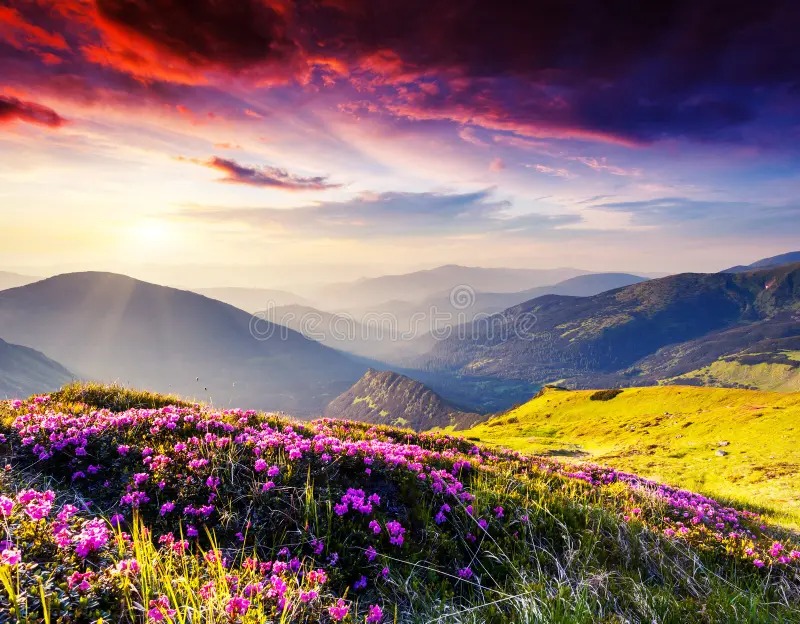
0 Comment